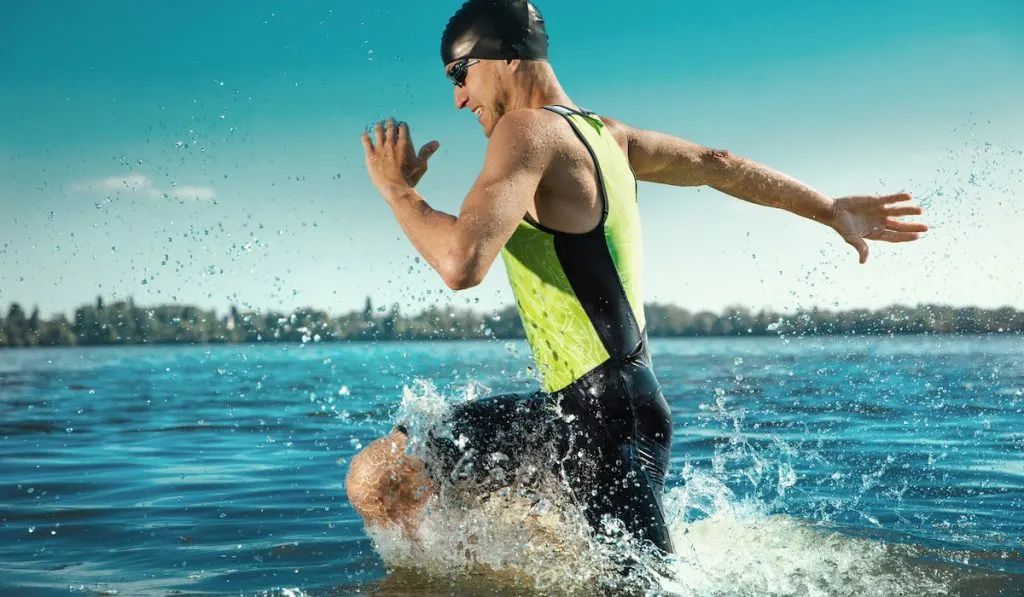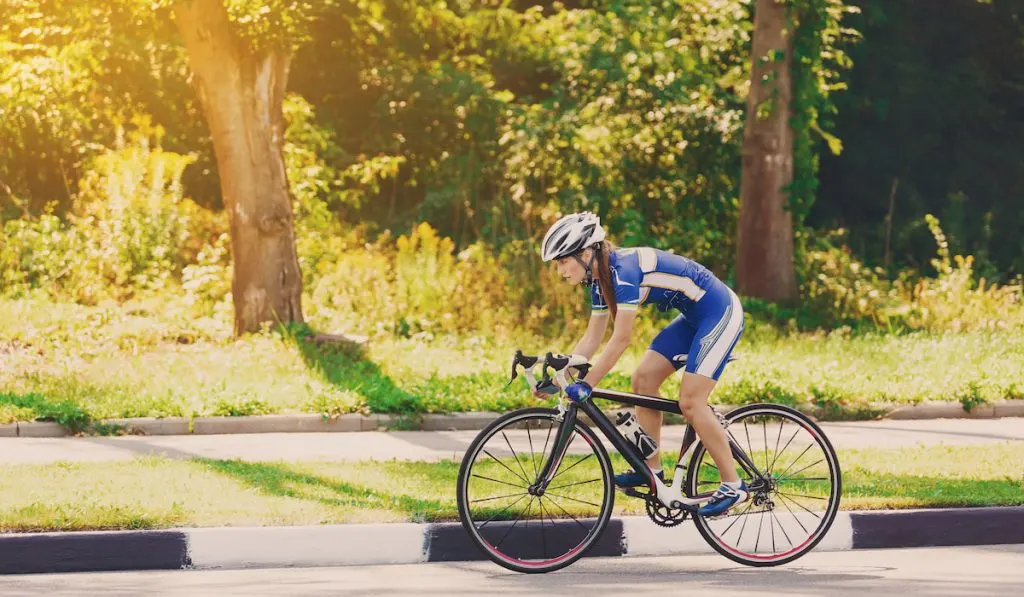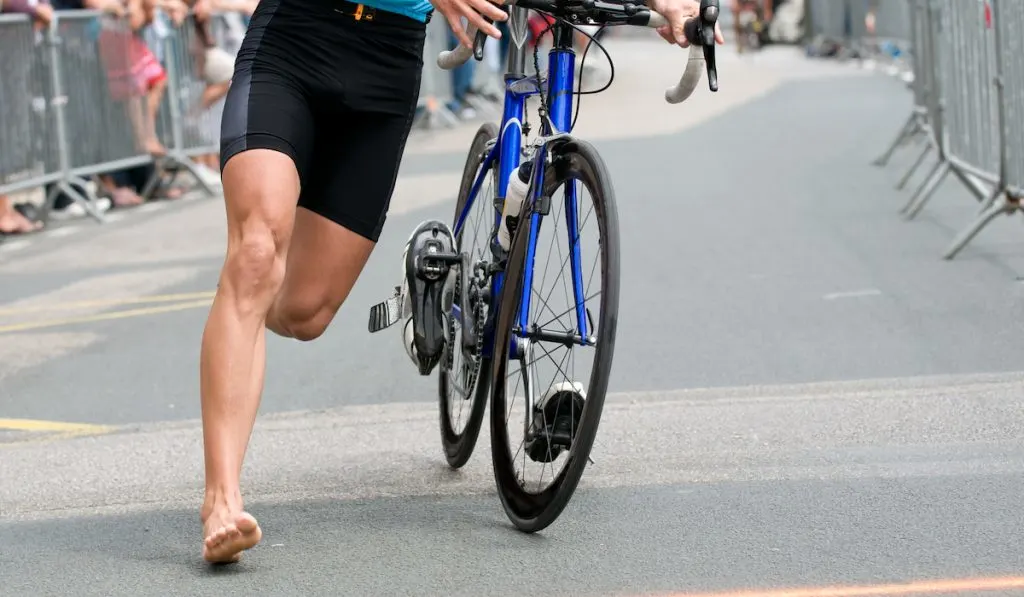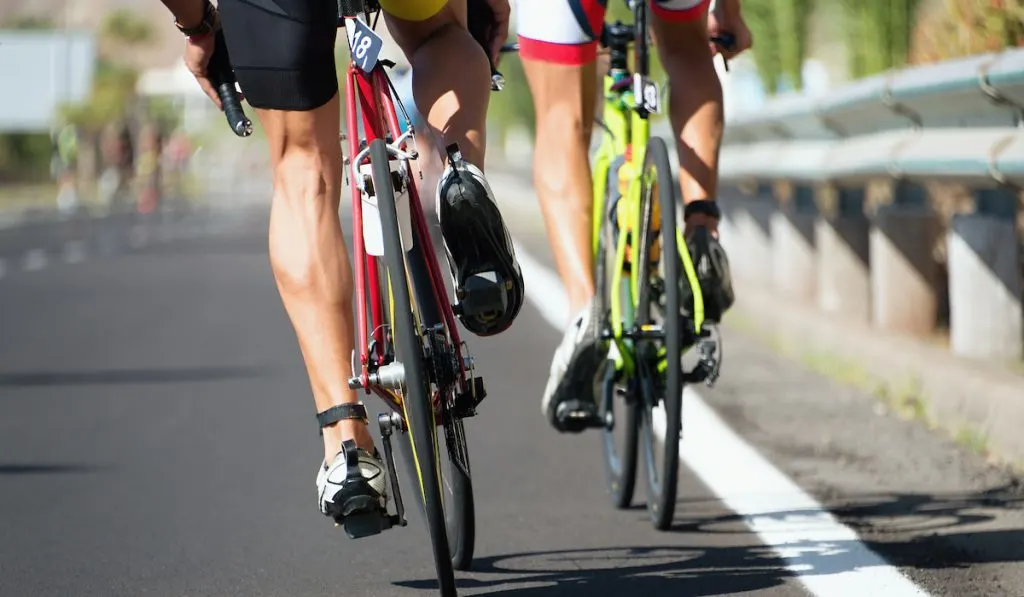Part of the routine of any triathlete is gearing up. You have to wear the right gear for each event, or you may not perform as you should.
On your gear list, you should have items like a bike helmet and a wetsuit. You should also have bike shoes and swim goggles.

Once the essential items are available, you may also include items like sunscreen, a towel, a visor, and socks.
You are probably wondering, do triathletes wear socks? Not all triathletes are keen on wearing socks when they race. For some triathletes deciding not to wear socks helps to save time during transitions. Triathletes who participate in short distances like sprint or Olympic distances forgo the use of socks totally.
As this post proceeds, we will discuss the details of the use of socks by triathletes. We also share tips that will help those who use socks and those who do not use socks.
Socks On vs. Socks Off.
Socks On
If you are concerned about getting blisters from friction, heat, and moisture, you will be pleased you took the time to wear socks before getting on your bike.
Nothing is as annoying as getting sore, bloodied, and blistered feet. Especially when there is still a long run ahead of you.
During a cross triathlon or long-distance triathlon, there is an increased risk of getting blisters. In this situation, losing a little time in transition would be less urgent for some athletes.
To avoid blisters, these athletes would wear socks at the first transition. Then they will ride their bike or run with the socks on.
Running can become uncomfortable as fatigue begins to creep in. If your shoes are well cushioned, it can help quell the discomfort.
Although, not every athlete may have thought about this. But wearing socks while you run provides an extra layer of cushioning.
Wearing socks reduces any form of irritation on your feet.
Plus, if you are used to wearing socks, there is a chance that deciding to go sockless may irritate your feet. This is because your feet are not quite used to what your shoes feel like without socks.
The material of the sock used depends on the athlete. But all in all, ensure the socks used are made from moisture-wicking fabrics.

Socks Off
Deciding not to wear socks for an Olympic distance triathlon or sprint can save you up to a minute while in transition. At the crucial end of the field, it can be the difference between making the podium or finishing with the pack.
Before you compete, toughen up your feet by practicing transitioning without socks while you train. Your training session should include skills/transition sessions or a short run off your bike.
It is prudent to keep some socks in your pockets when you start practicing how to race without them. The socks will come in handy when you feel you are getting a blister.
When you race without socks, consider getting toe covers for your bike shoes. The toe covers are to ensure your feet remain warm when riding in cold conditions.
To reduce the friction, you can place baby powder or lubricant in your shoes to prevent rubbing. If certain areas of your feet are prone to blisters, you can try taping those areas before the race begins.
Then again, instead of taping your skin, you may tape the insides of your shoes. This option should come in handy for athletes who are supersensitive to tape.
Apart from that, while running, the heat emitted makes your feet swell, and eventually, the tape gets peeled off. But with the insides of your shoes taped, this would not happen.
If you decide to go sockless, you can buy shoes with seamless or softer linings to prevent irritation. Another good option for triathletes is getting shoes that are built to help drain moisture efficiently.
Deciding not to use socks is something triathletes do to improve their transition speed. But if racing without socks leads to painful blisters, you should not do without them.
The pain might become a distraction while you race. Of course, if you are distracted, you most likely will not perform as well as you should.
If you insist on not wearing socks, ensure you have trained adequately with the same shoes you will wear during the race. Most triathletes walk barefoot regularly. Some triathletes also do running drills barefoot in a bid to toughen up their feet.

Pros and Cons of Not Wearing Socks
Pros
- Not wearing socks allows for faster transitions in triathlons.
- You do not get soggy socks from dumping water over your head or sweating.
- It gives you a better feel of the trail or road.
- No socks means increased ventilation for sweaty and hot runs.
- You do not experience sock-related problems like bunching.
- The shoes become a second-skin fit, and this may help reduce blisters.
Cons
- If you opt against using socks, minor irritations can become big problems. This can eventually slow you down.
- Without socks, tiny bits of gravel can enter your shoes and become a problem. With enough space, the gravel moves around in your shoe.
- Over-torque can become an issue if you have not mastered tying your shoes without socks. This can cause pressure and a pinch on the top of your foot.
- How your shoes fit with socks is not the same without socks. This can change your body positioning and slightly alter your movements.
How to Prevent Blisters While Wearing Socks
The best way to prevent blisters is for you not to get them. There are three main reasons people get blisters while racing: friction, moisture, and heat.
The methods for eliminating these factors are not universal. The results vary amongst athletes. Besides, a method might work for one race and be ineffective for another.
One remedy that reduces or eliminates blisters totally is using moisture-wicking socks. While some triathletes prefer using single-layer socks, others prefer to use double-layer socks. Wearing double-layer socks helps to keep athlete’s feet dry and cool by wicking moisture.
Moisture-wicking socks also help to reduce the friction on your feet. These socks reduce the friction by transferring it to the area separating the two sock layers. Sadly, even with these socks, some triathletes still get blisters.

Sock-Free Tips
Forgoing socks altogether will allow triathletes to transition faster. But it may leave them at risk of getting blisters. Yet, many triathletes do not wear socks while racing, and they manage not to get blisters. How do they do it?
There are four things a triathlete can use to combat blisters. They include taping, lubricants, hydration, and powder.
Friction is usually less when the two surfaces rubbing against each other are either very wet or very dry.
With lubricants, friction is reduced by keeping skin-to-shoe or skin-to-skin areas slick and wet. Antiperspirants and powders help in reducing friction by keeping the athlete’s feet very dry.
Maintaining electrolyte balance and keeping your body hydrated is essential while racing. For one, those measures prevent your feet from swelling.
When your sodium intake is in excess, or you overhydrate, it results in fluid retention. This fluid retention may make your toes and feet swell.
Many triathletes cannot get by with powders and lubricants. So, they get duct tape instead. While duct tape might not be the only type of tape available, it is preferred because of its slick surface.
If you decide to tape your feet before swimming, you can use a tape adherent to keep them intact until you transition to the race.
After taping your feet, put some powder on the edges of the tape. This prevents debris and rocks from sticking to their tacky borders.
Before the swimming event, the tape on your feet can loosen due to dirt and sand getting stuck in it.
Also, if the tape ends up being too tight, your feet will swell. Then in some cases, during the run, your feet may start to ache. As a result of these possibilities, some triathletes prefer to apply the tape inside their shoes.
The tape is typically applied to the heel area, side and top seams of the shoe, the shoe interface, and the insole. It is also used on any part that may create a hot spot on your feet while running. To find out where these hot spots are, practice running and riding without socks when you train.
Final Take
Not all triathletes wear socks. They may decide to run without socks. It all depends on their personal preference. For triathletes who sweat a lot, running without socks makes more sense, especially in the summer. If running without socks is your preferred option, ensure you are adequately prepared to deal with blisters.
Resources
- https://gpcsquad.com.au/socks-or-no-socks/
- https://www.amysaysso.com/best-socks-for-running-and-cycling-and-triathletes/
- https://www.active.com/triathlon/articles/fast-transitions-socks-or-no-socks-871096
- https://www.bigpeachrunningco.com/blazing-fast-transitions-for-triathletes/
- https://www.triathlete.com/gear/run/should-i-run-sockless-in-my-next-triathlon/
- https://ironmanhacks.com/101-ironman-hacks/28-wear-short-socks/
- https://www.rei.com/learn/expert-advice/triathlon-gear.html
- https://thewiredrunner.com/the-pros-and-cons-of-running-without-socks/
